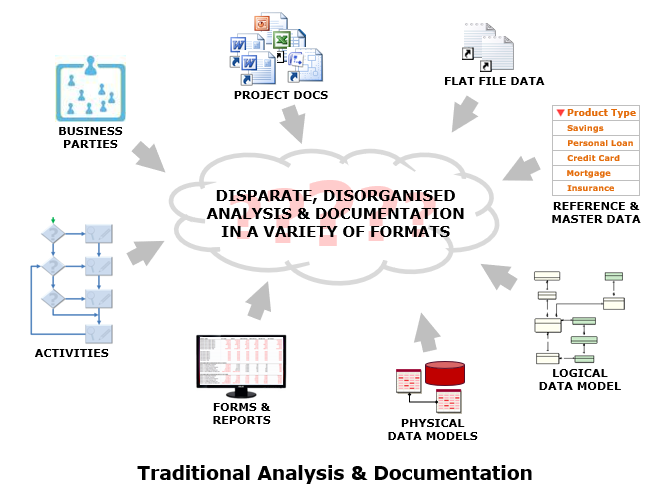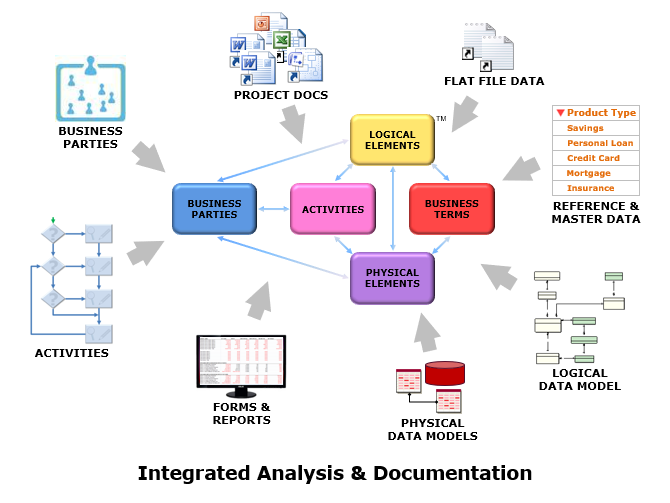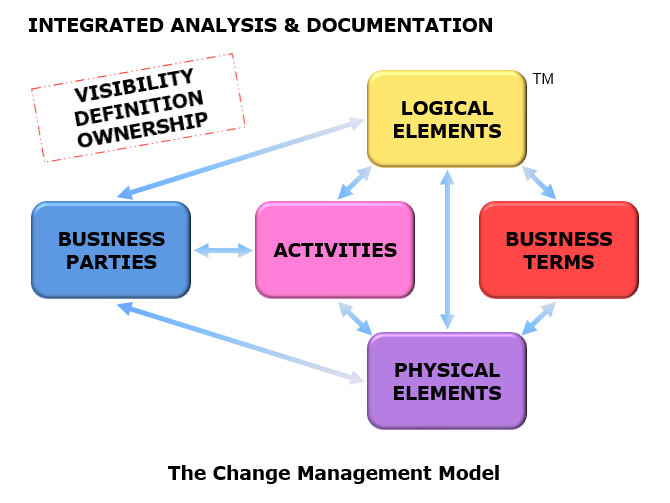The Change Management Model
A Structured & Collaborative Approach to Managing Change in Business Systems…
The sustainable growth of any business depends on its ability to manage change. At Corporate Data Management we understand that managing change in business systems relies on adopting a pro-active approach to managing data involving...
(1) Routine, periodic data profiling of all relevant data sources.
(2) Maintaining a set of structured documentation - i.e. the Change Management Model - which adds an interpretive layer to business systems, and thereby affords a comprehensive view of the use and quality of data across all business activities.
The vast majority of change, whether anticipated & commissioned or completely unforeseen, manifests itself in the data that business activities depend on. Adopting a pro-active approach to managing data allows change to be detected and reconciled before it can have any significant, negative impact.
Potentially harmful anomalies and disparities can be quickly identified and factored into operational & strategic decision making until it becomes practical to eliminate them at source. Also, because everyone likely to be affected by any change can be easily identified, the process of managing change becomes genuinely collaborative, so that resolving problems for some business parties will not inadvertently create problems for others.
Such an approach succeeds by establishing a more sophisticated means of business & systems analysis & documentation, which is based on the visibility, definition & ownership of data across all business activities. Managing data with this level of diligence allows organisations to accurately assess the viability and cost-effectiveness of proposed change, in terms of the required systems development, integration and rationalisation. It also allows them to quickly react to unforeseen change which could be harmful if left to build up over time.
And while corporate behaviour and performance remain in the media spotlight, and regulation becomes increasingly focused on economic stability, adopting such an approach allows organisations to demonstrate that they can manage change well enough to avoid any loss of customer or investor confidence.
The Change Management Model is designed to replace the vast majority of traditional project documentation - which tends to be disparate & disorganised, and exists in a variety of formats - with a single repository of data & metadata required to deliver and support applications & initiatives in all business environments. It is implemented using a relational database (on any RDBMS platform) which facilitates the capture and integration of business, systems & data analysis; and within which logical and physical references are unique and persistent across the whole enterprise.
The model can be used to document proposed changes to existing business systems, and estimate the development effort that they require. Similarly, the fitness for purpose of any third party ‘vanilla’ product can be assessed, as can the necessary customisation in terms of time and cost.
Maintaining the Change Management Model facilitates more rational, more cost-effective information systems delivery because it allows the impact of change, whether planned or merely discovered, to be understood and communicated, so that the value of application development is not eroded by data quality issues. Applied across multiple systems and activities, it represents ‘joined up IT’, without which ‘business as usual’ can become unusually problematic.
Further, it gives vital context and credibility to core initiatives like Business Intelligence, Customer Relationship Management and Data Governance; improves Project Management; and also allows organisations to dispense with a ‘fire-fighting’ approach to application support.





